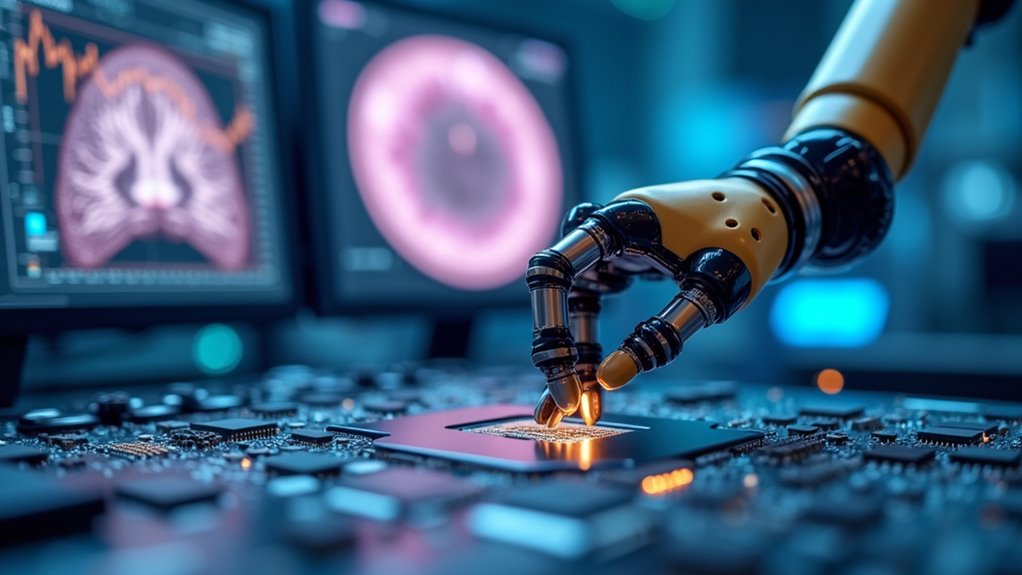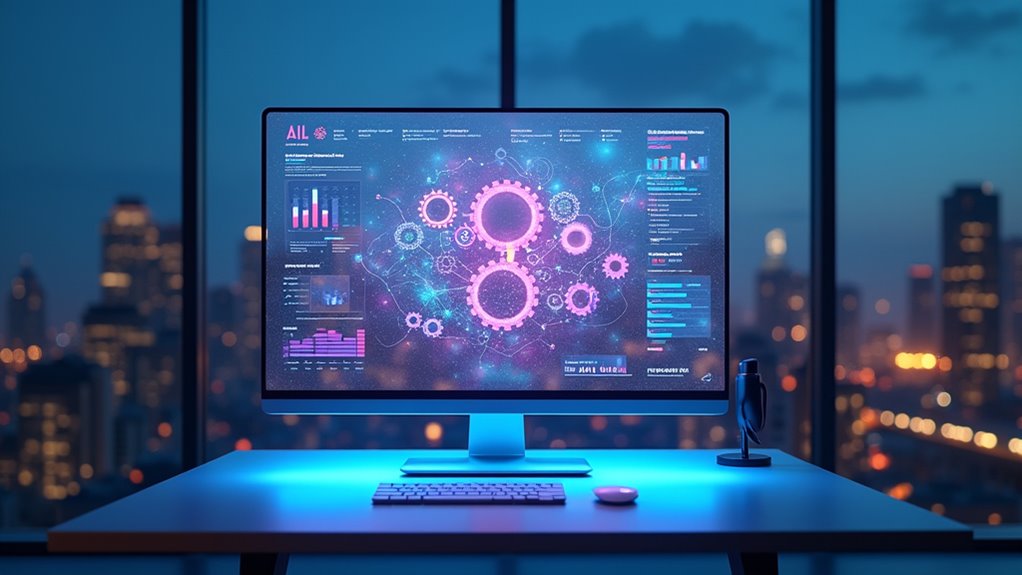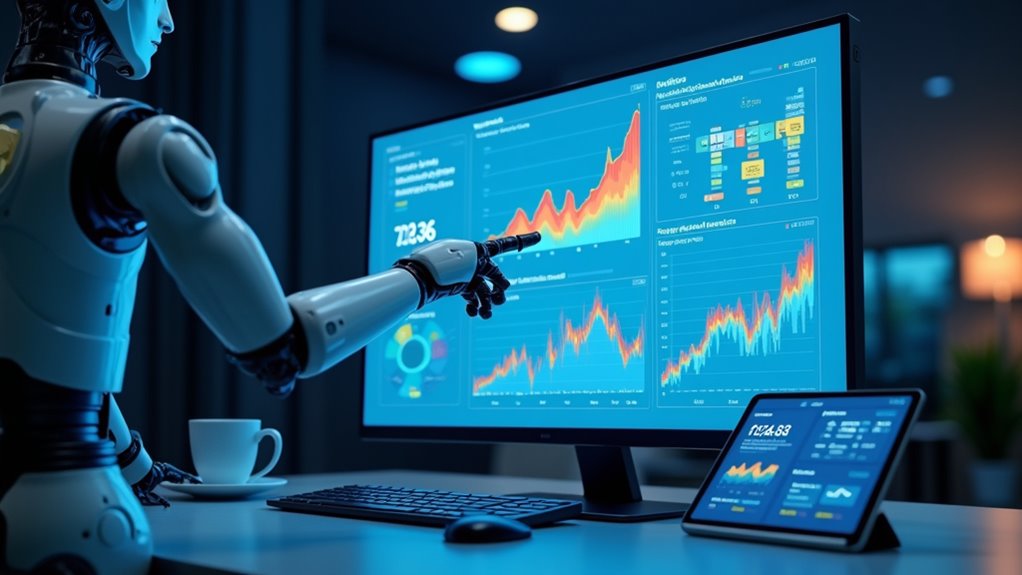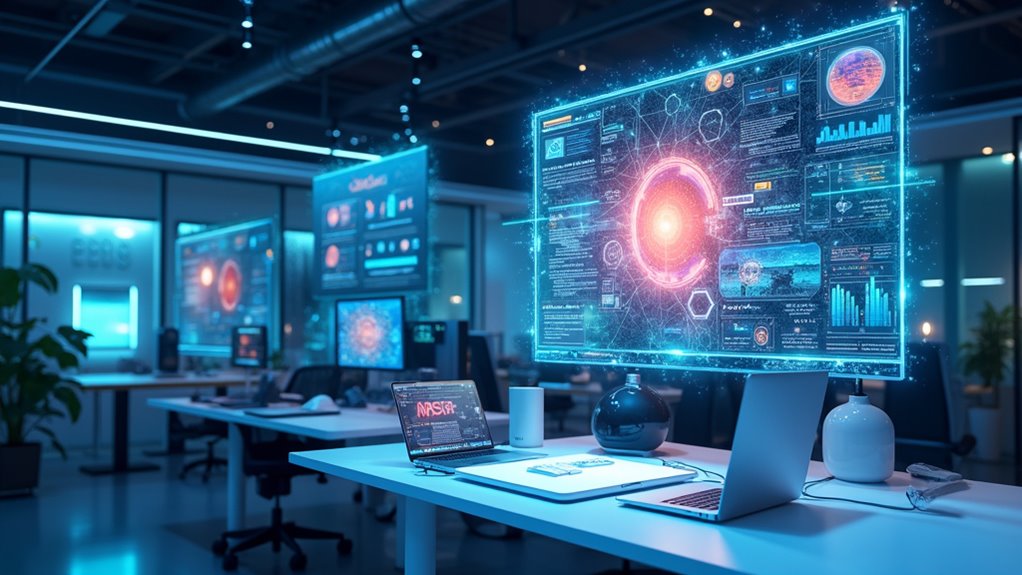Today’s AI does far more than you might think. It diagnoses cancer, detects fraud, drives cars, personalizes education, and handles customer service 24/7. AI processes massive datasets in seconds, making decisions faster than humans ever could. The technology now demonstrates reasoning abilities through large language models, predicts protein structures, and even passes bar exams. Though AI still struggles with biases and true understanding, its capabilities are expanding at breakneck speed. The future implications will surprise you.
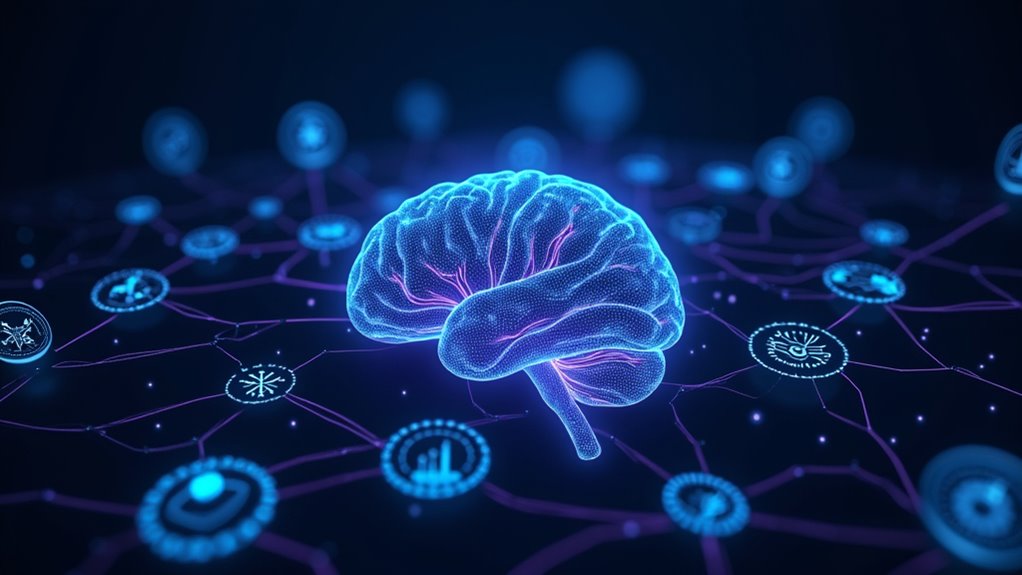
Artificial intelligence has exploded beyond science fiction fantasies into everyday reality, transforming industries at breakneck speed. Today’s AI capabilities stretch across virtually every sector imaginable, from healthcare diagnostics to financial forecasting. The ethical implications of these advancements cannot be ignored, with AI ethics discussions becoming increasingly urgent as systems grow more sophisticated and autonomous.
Remember when chess champions were exclusively human? Those days are long gone.
In healthcare, AI now identifies cancer cells with startling accuracy. Financial institutions deploy algorithms that spot fraud faster than any human analyst could dream of. Autonomous vehicles navigate complex traffic patterns, while students receive personalized learning experiences tailored to their unique needs. Customer service has been revolutionized by chatbots that handle inquiries 24/7 without coffee breaks or vacation days.
Decision-making processes have been supercharged through AI’s predictive analytics capabilities. Systems process vast datasets in real-time, solving complex problems that would take humans months or years. Business strategy? AI’s got opinions on that too, providing data-driven insights that cut through human biases and limitations.
AI’s predictive power turns months of human analysis into seconds, offering unbiased strategic insights beyond our cognitive limits.
Recent technological advancements have given us Large Language Models with reasoning abilities that increasingly mirror human thought. Multimodal systems integrate text, audio, and visual information simultaneously. Hardware improvements mean these systems run faster and more efficiently than ever before. AI’s computational power has been dramatically enhanced through the use of quantum bits, enabling exponential increases in storage capacity and processing speed.
Want to automate your workflow? AI agents can handle that, executing complex tasks without supervision.
Innovation across research fields has accelerated dramatically. Medical researchers use AI to predict protein structures, astronomers leverage it for space exploration, and environmental scientists track climate patterns with unprecedented precision. AI-powered medical imaging has revolutionized diagnostic accuracy, allowing healthcare professionals to detect diseases earlier than ever before. The socioeconomic impact is profound, reshaping job markets and raising important questions about privacy and data security.
AI isn’t perfect—it can amplify biases and lacks true understanding. But its capabilities continue expanding at breathtaking speed. With models like GPT-4 capable of passing bar exams at top percentile performance levels, the question isn’t what can AI do today, but what won’t it be doing tomorrow?
Frequently Asked Questions
How Do AI Systems Learn From Data?
AI systems learn through two primary approaches.
In supervised learning, they’re trained on labeled data where correct answers are provided—like showing a child pictures of dogs and saying “this is a dog.”
With unsupervised learning, they find patterns in unlabeled data all by themselves—pretty clever, right?
These systems analyze massive datasets, identify patterns, and make predictions based on what they’ve “seen” before.
The more quality data they consume, the smarter they get.
Will AI Replace Human Jobs in the Near Future?
AI will both eliminate and create jobs in the near future. Job automation will displace an estimated 800 million positions worldwide by 2030, causing significant workforce disruption across blue and white-collar sectors.
However, AI is simultaneously expected to generate 170 million new roles. Workers will need to adapt by developing technical skills like data analysis and AI literacy, alongside essential soft skills including creative thinking and resilience.
The change requires proactive upskilling—not panic.
What Ethical Concerns Surround Modern AI Technologies?
Modern AI technologies raise serious ethical red flags that can’t be ignored.
Bias detection remains challenging as algorithms often reflect societal prejudices, leading to unfair outcomes in healthcare, hiring, and criminal justice.
Privacy implications? They’re enormous. Your data fuels these systems, yet companies rarely explain how it’s used.
Surveillance capabilities threaten civil liberties, while deepfakes undermine truth itself.
Accountability is nebulous—who’s responsible when AI makes harmful decisions? The answer isn’t clear, and that’s troubling.
How Secure Are Ai-Powered Applications Against Hacking?
AI-powered applications face a complex security landscape. While they implement advanced security measures like behavioral analysis and real-time monitoring, they still harbor unique hacking vulnerabilities.
Their reliance on large datasets creates potential access points, and the same AI that protects can be weaponized against them.
Think of it as a high-tech arms race – as defenses improve, so do attack methods. Most systems remain reasonably secure, but none are impenetrable.
The cat-and-mouse game continues.
What Programming Languages Are Best for AI Development?
Python dominates AI development, with robust frameworks like TensorFlow and PyTorch making complex tasks surprisingly manageable.
Java libraries offer enterprise-grade stability when you need your AI to perform reliably at scale.
R excels for statistical AI applications, while C++ delivers raw performance for speed-critical systems.
Newcomer Julia bridges high-level accessibility with low-level performance.
Your choice depends on project needs—Python for flexibility and rapid development, Java for production systems, or specialized languages for specific requirements.
